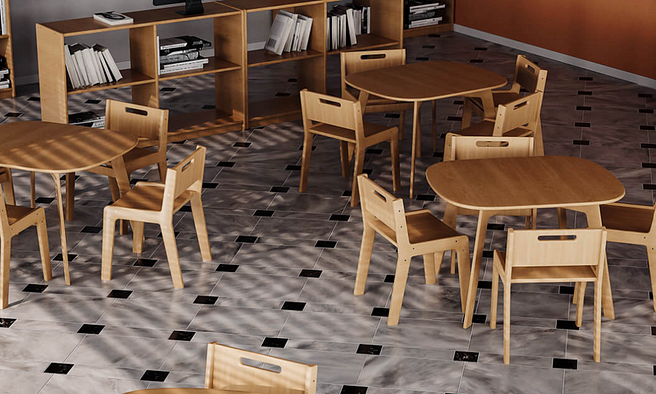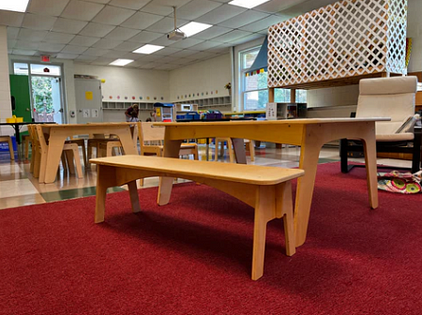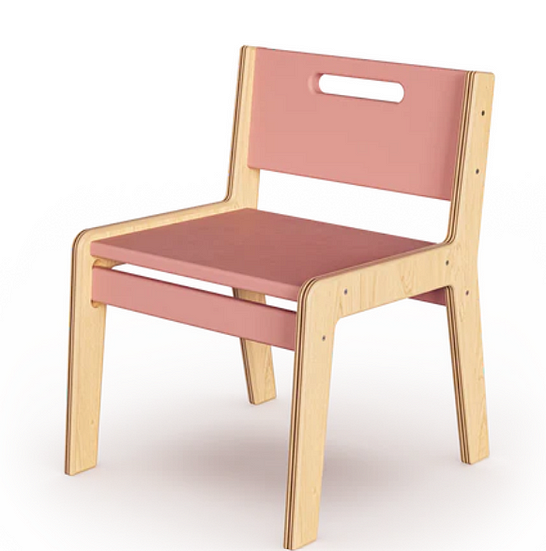What Are the Key Considerations When Choosing Furniture for a Child-Centered Educational Environment?
In the intricate landscape of early childhood education, furniture transcends its traditional role of mere physical infrastructure, emerging as a critical protagonist in the complex narrative of developmental learning. Modern educational design recognizes furniture as a sophisticated pedagogical instrument — a dynamic ecosystem that actively shapes children’s cognitive, physical, and social experiences.
These carefully curated spatial elements are not passive objects but active participants in creating environments that nurture curiosity, independence, and holistic growth, transforming classrooms from static spaces into living, breathing landscapes of discovery and potential.

What Are the Key Considerations When Choosing Furniture for a Child-Centered Educational Environment?
Introductory Exploration of Educational Space Design
- In the intricate landscape of early childhood education, furniture transcends its traditional role of mere physical infrastructure, emerging as a critical protagonist in the complex narrative of developmental learning.
- Modern educational design recognizes furniture as a sophisticated pedagogical instrument — a dynamic ecosystem that actively shapes children’s cognitive, physical, and social experiences.
- These carefully curated spatial elements are not passive objects but active participants in creating environments that nurture curiosity, independence, and holistic growth, transforming classrooms from static spaces into living, breathing landscapes of discovery and potential.
Philosophical Foundations of Child-Centered Furniture Design
- The title “What Are the Key Considerations When Choosing Furniture for a Child-Centered Educational Environment?” represents a profound interrogation of educational design philosophy.
- This provocative framing challenges educators, designers, and administrators to view furniture not as standardized, utilitarian objects, but as intentional interventions that directly influence learning experiences.
- By questioning the fundamental role of furniture, we unlock a deeper understanding of how physical environments can be strategically designed to support, inspire, and empower young learners.
Comprehensive Considerations in Furniture Selection
Selecting furniture for child-centered educational environments involves a multidimensional approach that integrates several critical factors:
- Ergonomic alignment with children’s developmental stages
- Flexibility and adaptability of spatial configurations
- Materials that prioritize safety and sensory engagement
- Aesthetic design that stimulates cognitive and creative processes
- Support for independent exploration and self-directed learning
Developmental Dimensions of Furniture Design
Physical Ergonomics and Developmental Alignment
Child-centered furniture must meticulously address developmental requirements by:
- Providing appropriately scaled dimensions
- Supporting correct posture and body mechanics
- Facilitating natural movement and exploration
- Reducing physical strain during learning activities
- Accommodating diverse physical abilities
Psychological and Cognitive Considerations
Furniture design profoundly impacts psychological and cognitive development through:
- Creating environments that reduce anxiety
- Promoting a sense of personal agency
- Supporting concentration and focus
- Encouraging social interaction
- Validating children’s autonomy

Material and Sustainability Considerations
Innovative Material Selection
Contemporary child-centered furniture integrates:
- Sustainable, eco-friendly materials
- Non-toxic, hypoallergenic surfaces
- Durable construction supporting long-term use
- Aesthetic designs that inspire creativity
- Flexible configurations adaptable to various learning scenarios
Technological Integration and Future Perspectives
Modern educational furniture increasingly incorporates:
- Smart design principles
- Modular and reconfigurable components
- Technology-friendly surfaces
- Integrated storage solutions
- Adaptable learning environments
Practical Implementation Strategies
Educational institutions must consider:
- Comprehensive budget planning
- Long-term durability assessments
- Teacher training in spatial design
- Alignment with educational philosophy
- Regular environment evaluation
Innovative Foundation Shelf: Architectural Foundations of Learning Spaces
The foundation shelf represents a critical element in designing purposeful educational environments. These meticulously crafted foundation shelf serve as organizational masterpieces that support children’s independent learning and exploration. Foundation shelf are engineered to provide accessible, visually engaging storage solutions that transform learning spaces into dynamic, interactive landscapes of discovery.
Transformative Waldorf Arch: Bridging Imagination and Structural Design
The Waldorf arch emerges as a sculptural element that transcends traditional furniture design. Carefully constructed Waldorf arch integrate natural aesthetics with developmental learning principles. Waldorf arch become architectural interventions that inspire creativity, support imaginative play, and create versatile spatial experiences for young learners.

Purposeful Montessori Schools Table: Designing Collaborative Learning Environments
Montessori schools table represent precision-engineered platforms for educational interaction. These thoughtfully designed Montessori schools table create flexible spaces that support individual and group learning experiences. Montessori schools table become dynamic educational tools that foster collaboration, independence, and exploratory learning.
Strategic Preschool Shoe Shelf: Cultivating Independence and Self-Care Skills
The preschool shoe shelf transforms into a sophisticated developmental tool. Preschool shoe shelf provide carefully designed spaces that encourage children to manage personal belongings independently. Preschool shoe shelf become early lessons in organization, responsibility, and self-sufficiency.
Functional Children Shoe Bench: Supporting Developmental Milestones
Children shoe bench emerge as multifunctional learning platforms. These carefully crafted children shoe bench support physical development, promote independence, and create dedicated spaces for personal care routines. Children shoe bench become integral components of holistic early childhood environments.
Comprehensive Montessori Classroom Furniture: Architectural Approach to Educational Spaces
Montessori classroom furniture represents a holistic design philosophy that transforms learning environments. These meticulously selected Montessori classroom furniture pieces create adaptive, child-centered spaces that support individual exploration and collective learning. Montessori classroom furniture becomes an active participant in educational experiences.

- Enhancing Spatial Order and Organization: By providing designated spaces for materials, Montessori shelves help establish a sense of order and structure within the classroom. This organized layout supports cognitive development and encourages children to develop organizational skills.
- Facilitating Independent Learning: The accessibility of Montessori shelves allows children to independently choose and interact with materials, fostering decision-making skills and promoting self-directed learning.
- Supporting Aesthetic and Functional Design: Montessori shelves contribute to the overall aesthetic of a learning space, offering clean lines and natural materials that create a calming and inviting environment conducive to learning.
- Encouraging Environmental Interaction: The strategic placement and design of shelves encourage children to interact with their environment, exploring materials that spark curiosity and inspire creativity.
Adaptive Kids Shoes Bench: Designing Spaces for Personal Development
The kids shoes bench transcends traditional seating concepts. Kids shoes bench provide carefully engineered spaces that support children’s independence and self-care skills. Kids shoes bench become instrumental in developing motor skills and personal responsibility.
Innovative Montessori Shelf Canada: Celebrating Educational Design Principles
Montessori shelves in Canada represent cutting-edge educational design solutions. These thoughtfully crafted montessori shelf canada embody a commitment to child-centered learning environments. Montessori shelf canada become cultural expressions of educational innovation.
Holistic Waldorf Furniture: Integrating Natural Design and Educational Philosophy
Waldorf furniture emerges as a sophisticated approach to educational design. These carefully constructed Waldorf furniture pieces integrate natural materials and developmental principles. Waldorf furniture becomes a bridge between aesthetic beauty and educational functionality.
Developmental Children’s Stool: Empowering Independent Exploration
The childrens stool transforms into a sophisticated learning tool. Childrens stool provide carefully designed platforms that support physical development and independent activities. Childrens stool become instrumental in fostering confidence and self-sufficiency.

Precision Table Montessori: Engineering Learning Experiences
Table Montessori represents a carefully designed educational platform. These meticulously engineered table Montessori solutions create dedicated spaces for hands-on learning and exploration. Table Montessori becomes an active participant in children’s developmental journey.
Functional Montessori Desk: Creating Personalized Learning Spaces
The Montessori desk emerges as a sophisticated learning environment. Montessori desk provide carefully crafted spaces that support individual exploration and educational activities. Montessori desk become personalized platforms for intellectual growth.
- High-Quality Materials: Our furniture is made from durable, eco-friendly materials that are safe for children.
- Child-Centric Design: Each piece is designed with the child’s needs and comfort in mind.
- Aesthetic Appeal: Our furniture blends seamlessly with modern home decor, ensuring that it looks great in any setting.
- Functional and Practical: We prioritize functionality and practicality, ensuring that our furniture supports your child’s development.
Strategic Montessori Shelves Canada: Pioneering Educational Design Solutions
Montessori shelves canada represent innovative approaches to learning environments. These carefully designed Montessori shelves in Canada create adaptive, child-centered storage solutions. Montessori shelves canada become architectural interventions in educational spaces.
Collaborative Montessori Table in Canada: Advancing Educational Design
The Montessori table in Canada transforms educational interaction spaces. Montessori tables in Canada provide carefully engineered platforms for collaborative and individual learning experiences. Montessori tables in Canada become dynamic educational tools.

Developmental Slides for Kids: Transforming Play into Learning
Slides for kids emerge as sophisticated developmental instruments. These carefully designed slides for kids support motor skill development and physical exploration. Slides for kids become active learning platforms that transform play into educational experiences.
Innovative Portable Coffee Stand: Designing Flexible Work Environments
The portable coffee stand represents adaptable spatial solutions. Portable coffee stands provide flexible, mobile platforms for various work and social interactions. Portable coffee stand become versatile tools in dynamic environments.
Active Slide for Kids: Engineering Playful Learning Experiences
Slide for kids transforms physical play into developmental opportunities. These carefully crafted slides for kids support motor skill refinement and spatial awareness. Slide for kids become integral components of holistic childhood experiences.
Flexible Classroom Bench Seating: Creating Adaptive Learning Landscapes
Classroom bench seating emerges as a sophisticated educational design solution. These carefully engineered classroom bench seating options create flexible, collaborative learning environments. Classroom bench seating becomes an active participant in educational experiences.
1. Fostering Social Connection: Traditional seating often limits social interactions, especially for children with special needs. With flexible seating, students can choose their peers as learning partners, fostering a sense of community and facilitating positive social interactions.
2 . Enhanced Engagement and Focus: Adaptive and flexible seating empowers students to take charge of their learning environment because they are comfortable. The ability to choose a comfortable and productive workspace has resulted in improved attention spans, increased participation, and a genuine enthusiasm for learning.
3 . Movement and Sensory Regulation: Integrating movement-friendly seating options like wobble stools or balance balls can be a game-changer for sensory regulation. This helps students self-regulate, ensuring they stay engaged and attentive throughout the class.

Intelligent Montessori Shelf with Storage: Optimizing Educational Spaces
The Montessori shelf with storage represents a comprehensive learning solution. Montessori shelves with storage provide carefully designed organizational platforms that support independent learning. Montessori shelf with storage become intelligent educational tools.
Supportive Daycare Chairs: Designing Comfort for Young Learners
Daycare chairs emerge as precision-engineered seating solutions. These carefully crafted daycare chairs provide supportive, ergonomic platforms for young learners. Daycare chairs become integral components of nurturing educational environments.
Collaborative Daycare Tables: Creating Interactive Learning Spaces
Daycare tables represent sophisticated educational design interventions. These carefully designed daycare tables create flexible platforms for group and individual learning experiences. Daycare tables become dynamic educational tools.
Developmental Kids Stools: Supporting Independent Exploration
Kids stools transform into sophisticated learning platforms. These carefully engineered kids stools provide dedicated spaces for independent activities and exploration. Kids stools become instrumental in fostering childhood development.

Adaptive Adjustable Wooden Shelf: Designing Flexible Storage Solutions
The adjustable wooden shelf emerges as a versatile educational tool. Adjustable wooden shelf provide carefully crafted storage solutions that adapt to changing learning needs. Adjustable wooden shelf become intelligent organizational platforms.
- One of the main benefits of Flexible Shelving is that it is adjustable to help make the most of your storage space. These systems are fully configurable, letting you change the heights of the shelves and reconfigure accessories to fit the items you want to store.
- This customization ability prevents wasted space so you can fit more items within the unit. As your storage needs change, your shelving system should have the capacity to change, too.
- Adjustable shelves make rearranging one unit or redesigning a whole storage system configuration easy, without the need to buy additional storage solutions, displace stored materials, or dedicate an inordinate amount time and effort in the process.
Empowering Kids Stool: Creating Spaces for Independent Learning
Kids stool represents a sophisticated developmental instrument. These carefully designed kids stools support physical development and independent exploration. Kids stool becomes an integral component of holistic childhood experiences.
Ergonomic Montessori Chair: Designing Supportive Learning Environments
The Montessori chair emerges as a precision-engineered seating solution. Montessori chairs provide carefully crafted platforms that support individual learning experiences. Montessori chairs become active participants in educational development.

Final Thoughts
As we conclude this exploration, we invite you to fundamentally reimagine educational spaces. In a world rapidly transforming through technological and pedagogical innovations, how will you design learning environments that not only accommodate but actively propel children’s inherent curiosity, creativity, and capacity for extraordinary achievement?
Are you ready to transform educational spaces from passive backgrounds into active catalysts of childhood potential?
Comments
Post a Comment